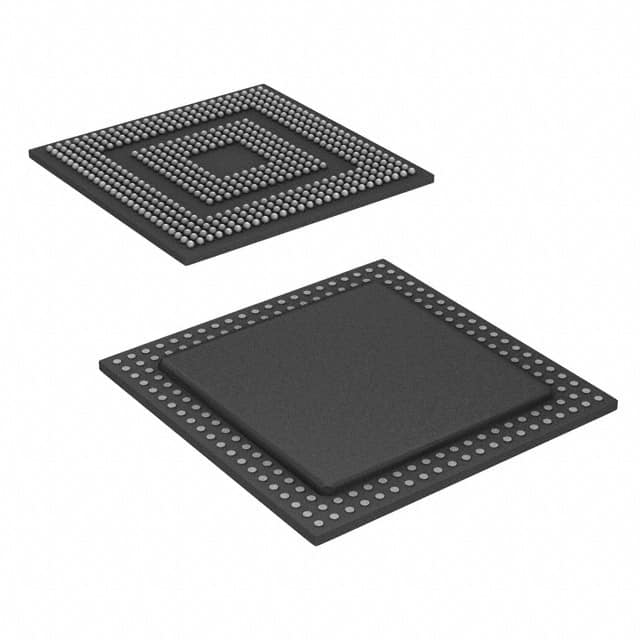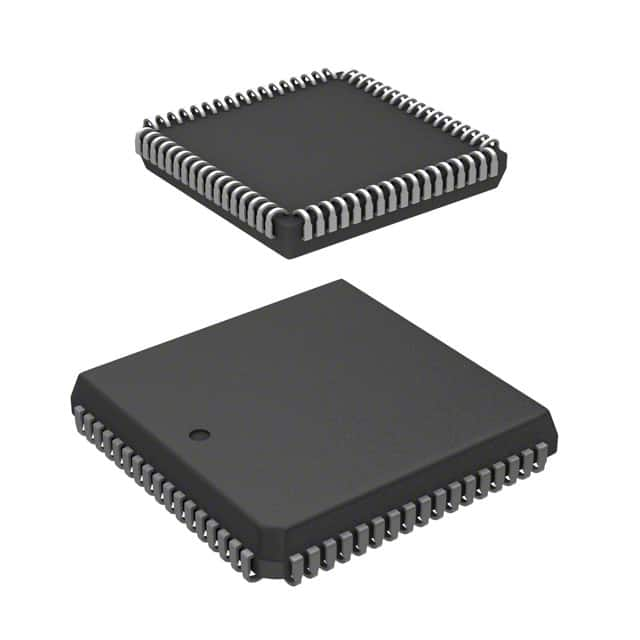Ⅰ. Embedded - Microprocessors
Ⅱ. Physical Characteristics of Embedded - Microprocessors
Ⅲ. Electrical Characteristics of Embedded - Microprocessors
Embedded microprocessors, also known as microcontrollers, are fundamental components of embedded systems. An embedded system is a dedicated computer system designed to perform specific functions or tasks within a larger device or system. These microprocessors are compact integrated circuits that combine a central processing unit (CPU) core with memory, input/output interfaces, and other peripherals on a single chip.

Embedded microprocessors are specifically designed to operate within the constraints of embedded systems. They are optimized for low power consumption, real-time operation, and efficient execution of specific tasks. Here are some key aspects to consider when discussing embedded microprocessors:
1.Processing Power: Embedded microprocessors come in various architectures and with different processing capabilities. They range from simple 8-bit processors suitable for basic control tasks to powerful 32-bit processors capable of running complex applications. The choice of microprocessor depends on the specific requirements of the embedded system.
2.Peripherals and Interfaces: Embedded microprocessors include a variety of integrated peripherals and interfaces tailored to the needs of the targeted application. These may include digital and analog input/output (I/O) pins, timers, communication interfaces (UART, SPI, I2C), serial ports, analog-to-digital converters (ADCs), and more. The availability of these built-in peripherals simplifies the system design and reduces the need for external components.
3.Memory: Embedded microprocessors incorporate different types of memory to store program instructions and data. They typically include non-volatile memory (flash memory) for storing the program code, random access memory (RAM) for temporary data storage, and electrically erasable programmable read-only memory (EEPROM) for non-volatile data storage. The memory capacity of a microprocessor affects the complexity of the applications it can handle.
4.Real-Time Operation: Many embedded systems require real-time operation, where tasks must be completed within specific time constraints. Embedded microprocessors are designed to handle real-time tasks efficiently, allowing them to respond to external events or inputs promptly. Real-time capabilities are crucial in applications such as robotics, industrial control, and automotive systems.
5.Software Development: Embedded microprocessors are programmed using specialized software development tools and programming languages. Commonly used languages include C and C++, which provide low-level access to the hardware and efficient code execution. Integrated development environments (IDEs) and compilers specific to the microprocessor architecture simplify the development process.
6.Power Efficiency: Embedded systems often operate on limited power sources such as batteries or have stringent power requirements. Embedded microprocessors are designed to be power-efficient, enabling extended battery life and minimizing power consumption. Techniques such as clock gating, power-saving modes, and dynamic voltage scaling help optimize power usage.
7.Application Areas: Embedded microprocessors find applications in a wide range of fields, including consumer electronics, automotive systems, home automation, medical devices, industrial automation, and more. They enable the intelligence and control needed for various functions such as sensing, data processing, communication, and actuation.
Embedded microprocessors play a vital role in powering the functionality and intelligence of countless devices and systems we encounter in our daily lives. Their integration of processing power, memory, and peripherals on a single chip provides a compact and efficient solution for controlling and automating a wide range of applications.
Physical Characteristics of Embedded - Microprocessors
When considering the physical characteristics of embedded microprocessors, there are a few key aspects to take into account:
1.Package Size and Form Factor: Embedded microprocessors are available in various package sizes and form factors. The package is the physical casing that houses the microprocessor chip and its connections. Common package types include Dual Inline Package (DIP), Small Outline Integrated Circuit (SOIC), Quad Flat Package (QFP), Ball Grid Array (BGA), and Chip Scale Package (CSP). The choice of package depends on factors such as space constraints, heat dissipation requirements, and manufacturing considerations.
2.Pin Count: The pin count of an embedded microprocessor refers to the number of electrical connections or pins on the package. These pins serve as the interface between the microprocessor and the rest of the system, including power supply, inputs, outputs, and communication buses. The pin count can vary significantly, ranging from a few pins for simple microprocessors to hundreds of pins for more complex devices.
3.Operating Voltage: Embedded microprocessors have specific operating voltage requirements, which determine the power supply needed to operate them. The voltage can range from a few volts to lower levels, such as 3.3V or 1.8V, depending on the microprocessor's architecture and design. It's important to provide the correct voltage to ensure proper functionality and prevent damage to the microprocessor.
4.Clock Frequency: The clock frequency of an embedded microprocessor represents the speed at which the processor operates. It is typically measured in megahertz (MHz) or gigahertz (GHz) and determines the number of instructions the microprocessor can execute per second. The clock frequency varies depending on the specific microprocessor model and can range from a few MHz to several GHz.
5.Heat Dissipation and Cooling: Embedded microprocessors generate heat during operation, and managing this heat is essential for their reliable functioning. Depending on the power consumption and processing requirements, microprocessors may require cooling mechanisms such as heat sinks, fans, or even liquid cooling solutions to dissipate excess heat and maintain safe operating temperatures.
6.Environmental Considerations: Embedded microprocessors may have specific requirements regarding the operating environment. Some microprocessors are designed to withstand higher temperature ranges or operate in harsh conditions, such as extreme temperatures, humidity, or vibration. It's important to select microprocessors that are suitable for the intended application environment.
7.Physical Interfaces: Embedded microprocessors may have physical interfaces for connecting external devices or modules. These interfaces can include standard connectors such as USB ports, Ethernet ports, HDMI ports, or specialized connectors for specific applications. The physical interfaces enable the microprocessor to communicate with external devices or systems, expanding its capabilities.
It's crucial to consider these physical characteristics when selecting an embedded microprocessor for a specific application. Factors such as package size, pin count, operating voltage, clock frequency, heat dissipation, environmental conditions, and physical interfaces impact the microprocessor's compatibility, performance, and reliability within the embedded system.

Electrical Characteristics of Embedded - Microprocessors
When discussing the electrical characteristics of embedded microprocessors, several key factors come into play. These characteristics determine the electrical requirements and behavior of the microprocessor within an embedded system. Here are some important electrical considerations:
1.Operating Voltage: Embedded microprocessors have specific voltage requirements for proper operation. They typically require a stable power supply within a specified voltage range. The operating voltage can vary depending on the microprocessor's architecture, design, and the technology used. Common operating voltages include 3.3V, 5V, or lower voltages for low-power microprocessors.
2.Power Consumption: Embedded microprocessors are designed to be power-efficient, as many embedded systems operate on limited power sources or have strict power constraints. The power consumption of a microprocessor depends on various factors, including the clock frequency, operating voltage, processing load, and the specific operations being performed. Lower power consumption is desirable to maximize battery life and reduce power supply requirements.
3.Current Requirements: Microprocessors require a specific amount of current to operate correctly. The current consumption varies depending on the microprocessor's architecture, clock frequency, peripheral usage, and the tasks being performed. It's essential to ensure that the power supply can provide sufficient current to meet the microprocessor's requirements without exceeding its limits.
4.Input and Output Voltage Levels: Embedded microprocessors have defined voltage levels for their inputs and outputs. These voltage levels determine how the microprocessor communicates with external devices or peripherals. Common levels include TTL (Transistor-Transistor Logic) or CMOS (Complementary Metal-Oxide-Semiconductor) levels, which typically range from 0V to the power supply voltage level (e.g., 3.3V or 5V).
5.I/O Characteristics: Embedded microprocessors have specific input and output characteristics, including input impedance, output drive strength, and voltage levels. These characteristics determine how the microprocessor interacts with external devices or interfaces. It's important to ensure compatibility between the microprocessor's I/O characteristics and the electrical requirements of the connected devices.
6.Clock Signal: Microprocessors require a clock signal to synchronize their internal operations. The clock signal provides timing information for the microprocessor's operations and ensures that instructions are executed at the correct rate. The clock signal frequency and waveform characteristics (such as duty cycle and rise/fall times) must meet the specifications of the microprocessor to ensure proper functioning.
7.Protection and ESD: Embedded microprocessors may include built-in protection features to safeguard against electrical anomalies and Electrostatic Discharge (ESD) events. These features help protect the microprocessor from voltage spikes, power supply fluctuations, and electrostatic discharges that could potentially damage or disrupt its operation.
Understanding the electrical characteristics of embedded microprocessors is crucial for proper integration into an embedded system. Adhering to the specified voltage levels, current requirements, input/output characteristics, clock signal requirements, and implementing appropriate protection measures ensures reliable and stable operation of the microprocessor within the system.



